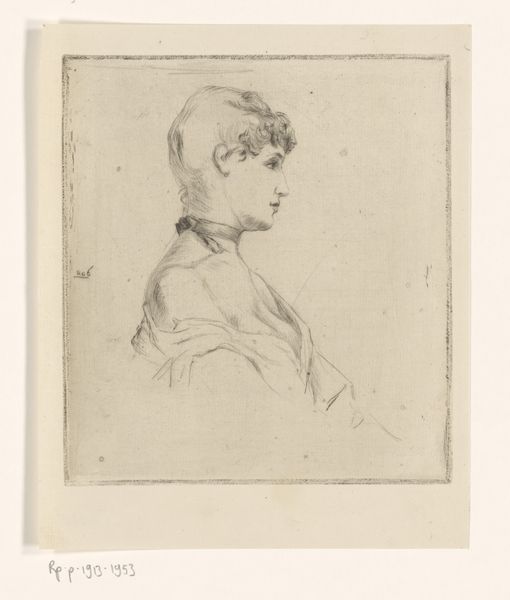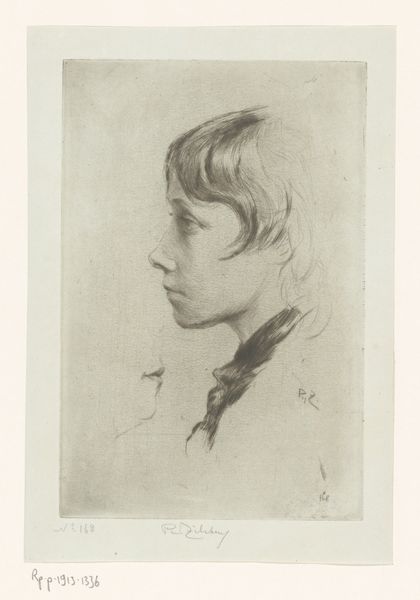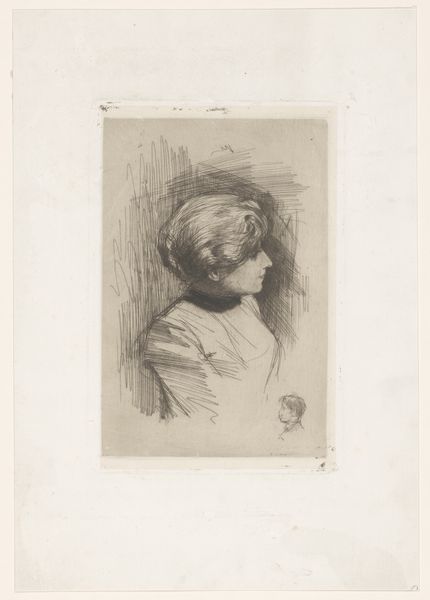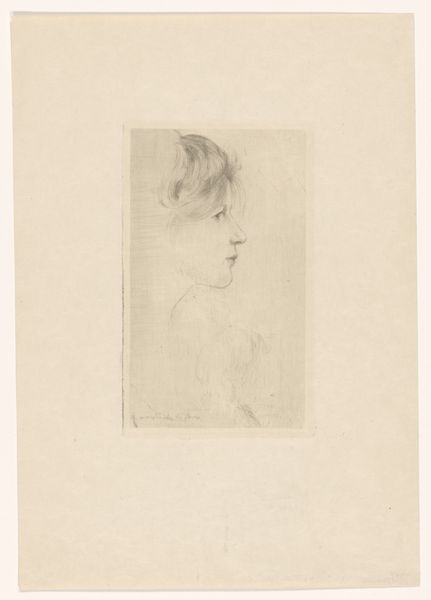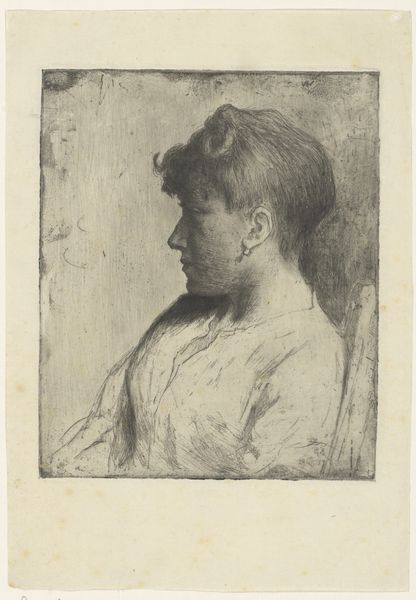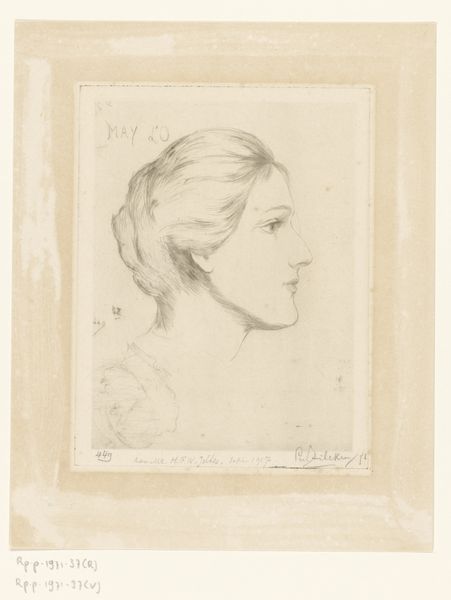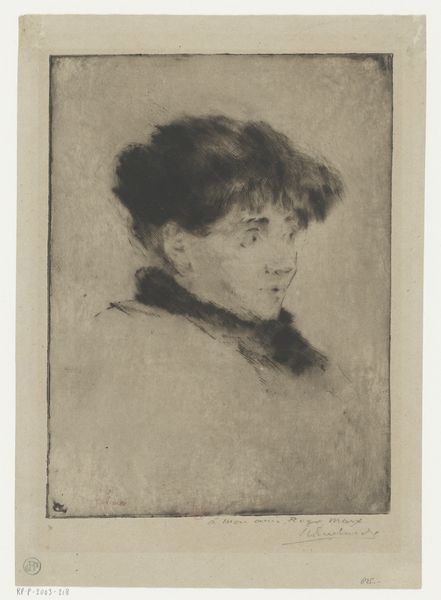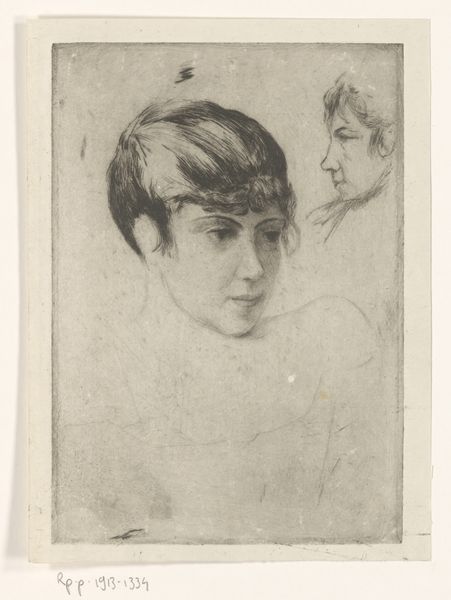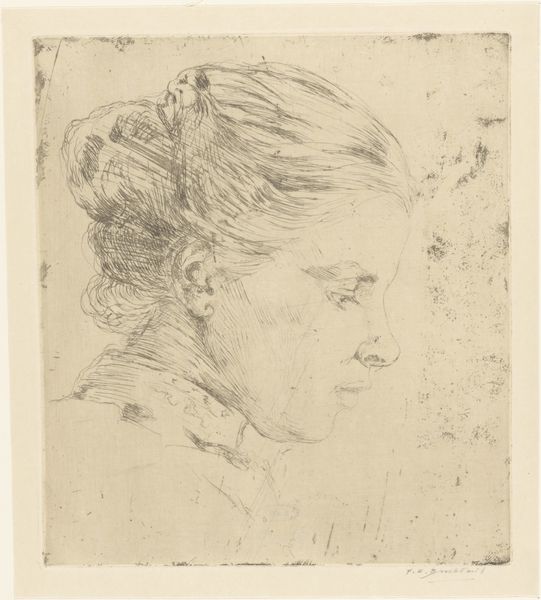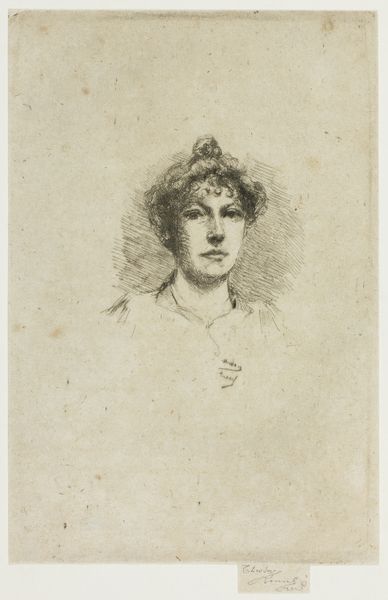
Dimensions: height 160 mm, width 143 mm
Copyright: Rijks Museum: Open Domain
Curator: Here we have Philip Zilcken’s "Portret van een jonge vrouw," etched sometime between 1890 and 1913, now held here at the Rijksmuseum. It's a subtle, intimate piece. What's your first impression? Editor: My initial reaction is of quiet melancholy. The delicate lines of the etching, the soft gray tones... they all contribute to a feeling of gentle introspection. The scale also amplifies the effect, rendering the gaze so personal. Curator: Interesting, I read a somber dignity. See how her posture, though soft, hints at the constraints of the period – a black ribbon around her neck symbolizing the social requirements, yet she maintains a quiet but strong presence. It is the romantic era, after all, when expressing your social standing mattered the most, if my readings in art history serve me right. Editor: Yes, that black ribbon also strikes me. Formally, it provides a critical focal point, anchoring the composition, that slight darkening allowing the profile to be revealed; practically dividing the space where we read light to shadow between the neck up and torso down. The etcher creates depth within an economy of marks, and the woman’s presence has some gravitas. Curator: Gravitas is key here. Look how Zilcken evokes a certain restraint in the lines themselves. Each choice—the delicate shading under her chin, the almost ethereal rendering of her dress—speaks of both meticulous technique and psychological understanding. I see echoes of Dutch portrait traditions, emphasizing character over idealized beauty. The gaze appears confident but also vulnerable. What would psychology tell you? Editor: Those very controlled lines lead to that impression, because from a semiotic perspective, there’s a deliberate choice here to present her internal state through controlled exterior signs, which speak of class and restraint. But it raises further questions. For instance, what inner emotions are deliberately obscured by these careful strokes? This interplay is the real source of the print's emotional power. The etching work on this piece also draws attention because of the contrast between deep and soft lines within a relatively confined space. Curator: Indeed. So it's that carefully managed balance, I feel, that lends this image its timeless quality, a balance of her controlled gaze, and, as you put it, our questioning to see if that gaze mirrors her interior, too. Editor: I concur. Ultimately, this quiet portrait invites us to delve beyond the surface. A testament to the enduring appeal of a thoughtful, and carefully composed etching.
Comments
No comments
Be the first to comment and join the conversation on the ultimate creative platform.
